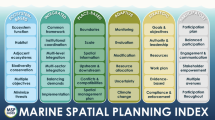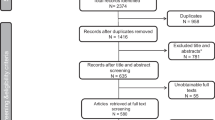Abstract
The primary objective of this study was to identify gaps in coastal and marine data available through the Gulf Geospatial Assessment of Marine Ecosystems (GAME) project for the west coast of Florida. A survey was designed and sent to more than 2,000 experts working with coastal and ocean issues in the Gulf of Mexico to elicit their opinions. The survey asked the experts to rank 12 data categories and score the relevance of four qualifiers (spatial resolution, temporal resolution, age of data, and level of detail) using a discrete choice approach. The statistical interpretation of experts’ responses allowed assigning a relative value to each available data set, based upon their qualifiers. The results were then displayed in a Geographic Information System to visually show how the total value for all data categories or for a specific data category varies spatially and to identify data gaps. It was found that the total data set value is generally higher within Tampa Bay and along the coast. Areas with low total value show a lack of data sets that have qualifiers falling within the ideal range, as per experts’ opinions. The gap maps created for this project are useful to identify priority areas where money should be invested for future data collection.




Similar content being viewed by others
References
Abell R, Thieme M, Dinerstein E, Olson D (2002) A sourcebook for conducting biological assessments and developing biodiversity visions for ecoregion conservation. Volume II: Freshwater ecoregions. World Wildlife Fund, Washington, DC
Adams CW (1999) Gap analysis is using data analysis to provide information. http://www.adamssixsigma.com/Newsletters/data_analysis.htm. Accessed 25 July 2010
Allison PD (1999) Logistic regression using SAS: theory and application. SAS Institute Inc., Cary, NC
Allison PD, Christakis NA (1994) Logit models for sets of ranked items. In: Marsden PV (ed) Sociological methodology. Basil Blackwell, Oxford, pp 199–228
Arkema KK, Abramson SC, Dewsbury DM (2006) Marine ecosystem-based management: from characterization to implementation. Front Ecol Environ 10:525–532
Carollo C, Reed D, Ogden JC, Palandro D (2009) The Importance of data discovery and management in advancing ecosystem-based management. Mar Policy 33:651–653
Carollo C, Reed D (2010) Ecosystem-based management institutional design: balance between federal, state, and local governments within the Gulf of Mexico Alliance. Mar Policy 34:178–181
Crowder LB, Osherenko G, Young OR, Airame’ S, Norse EA, Baron N, Day JC, Douvere F, Ehler CN, Halpern BS, Langdon SJ, McLeod KL, Ogden JC, Peach RE, Rosenberg AA, Wilson JA (2006) Resolving mismatches in U.S. ocean governance. Science 5787:617–618
Dinerstein E, Powell G, Olson D, Wikramanayake E, Abell R, Loucks C, Underwood E, Allnutt T, Wettengel W, Ricketts T, Strand H, O’Connor S, Burgess N (2000) A workbook for conducting biological assessments and developing biodiversity visions for ecoregion-based conservation. Part I: Terrestrial ecoregions. World Wildlife Fund, Washington, DC
Eastern Research Group (2010) Marine spatial planning stakeholder analysis. Conducted for NOAA Coastal Services Center, Charleston, SC. http://www.csc.noaa.gov/publications/MSP_Stakeholder_Analysis.pdf. Accessed 26 April 2011
Gulf Coast Ecosystem Restoration Task Force (2011) Gulf of Mexico regional ecosystem restoration strategy (preliminary) http://www.epa.gov/gcertf/pdfs/GCERTF-Preliminary-Strategy_10052011_forPDF_10-17_changesacc_b.pdf. Accessed October 17 2011
Gulf of Mexico Alliance (2009) Governors’ action plan II for healthy and resilient coasts 2009–2014. http://gulfofmexicoalliance.org/pdfs/ap2_final2.pdf. Accessed 26 April 2011
Joint Ocean Commission Initiative (2009) One coast, one future. Securing the health of West Coast ecosystems and economies. Meridian Institute. http://www.jointoceancommission.org/resource-center/1-Reports/2009-01-15_One_Coast_One_Future.pdf. Accessed 26 April, 2011
Kumar A, Kumar S (2010) Introducing action and performance gap in gap model: focus on management education sector in India. http://www.accman.in/…/Introducing%20Action%20&%20Performance%20Gap%20in%20Gap%20Model.doc. Accessed 27 April 2011
Nicholas Institute for Environmental Policy Solutions—Duke University (2006) Pathway to ocean ecosystem-based management: design principles for regional ocean governance in the United States. Summary of a discussion held October 2005 at Duke University. Accessed 26 April 2011
Northern Gulf Institute Ecosystem Team (2009) Integrated ecosystem assessment initiative for selected systems in the Northern Gulf of Mexico. Northern Gulf Institute, Stennis Space Center, MS. http://www.northerngulfinstitute.org/publications/docs/2010/01/7180SummaryDocumentIEA2010.01.pdf. Accessed 26 April 2011
Packard Foundation (2010) Getting closer to EBM. Evaluation of the Packard Foundation ecosystem-based management initiative. Technical Report. The David and Lucile Packard Foundation. http://www.packard.org/assets/files/conservationandscience/ARCeconomics_EBM_Initiative_Evaluation_Final_Report_June_09.pdf. Accessed 26April 2011
Pew Oceans Commission (2003) America’s living oceans: charting a course for sea change. A report to the Nation. Pew Oceans Commission, Arlington, Virginia. http://www.pewtrusts.org/our_work_report_detail.aspx?id=30009. Accessed 26 April 2011
Robbins L, Wolfe S, and Raabe E (2008) Mapping of Florida’s coastal and marine resources: setting priorities workshop. U.S. Geological Survey Open-File Report 2008–1157, 36 pages; St. Petersburg, FL.
Rouda RH, Kusy ME Jr (1995) Development of human resources—Part 2—Needs Assessment. http://alumnus.caltech.edu/~rouda/T2_NA.html. Accessed 25 July 25 2010
Sarkissian A (1999) eHow money—Gap analysis tutorial. http://www.ehow.com/way_5157021_gap-analysis-tutorial.html. Accessed 23 July 2010
Schempp A, Mengerink K, Austin J (2009) Expanding the use of ecosystem-based management in the Coastal Zone Management Act. Environmental Law Institute, Washington, DC http://www.elistore.org/reports_detail.asp?ID=11345. Accessed 26 April 2011
Sempier SH, Havens K, Stickney R, Wilson C, and Swann LD (2009) Gulf of Mexico Research Plan. MASGP-09-024
Sherman K, Sissenwine M, Christensen V, Duda A, Hempel G, Ibe C, Levin S, Lluch-Belda D, Matishov G, McGlade J, O’Toole M, Seitzinger S, Serra R, Skjoldal HR, Tang Q, Thulin J, Vandeweerd V, Zwanenburg K (2005) A global movement toward an ecosystem approach to management of marine resources: politics and socio-economics of ecosystem-based management of marine resources. Mar Ecol-Prog Ser 300:275–279
Teck SJ, Halpern BS, Kappel CV, Micheli F, Selkoe KA, Crain CM, Martone R, Shearer C, Arvai J, Fischhoff B, Murray G, Neslo R, Cooke R (2010) Using expert judgment to estimate marine ecosystem vulnerability in the California Current. Ecol Appl 20:1402–1416
The Commonwealth of Massachusetts (2009) Massachusetts ocean management plan. Vol I—Management and administration. Volume II—Baseline assessment and science framework. Executive Office of Energy and Environmental Affairs, Boston, MA
The Nature Conservancy (2006) Marine ecosystem-based management: learning from case studies to advance decision support. The Nature Conservancy and the David and Lucile Packard Foundation. http://www.marineplanning.org/pdf/Tools_Advice_Needs_TNC_final.pdf. Accessed 16 April 2011
The White House Council on Environmental Quality (2010) Final recommendations of the Interagency Ocean Policy Task Force. July 19, 2010. Executive Office of the President of the United States. Washington, D.C http://www.whitehouse.gov/files/documents/OPTF_FinalRecs.pdf. Accessed April 16, 2011
U.S. Commission on Ocean Policy (2004) An ocean blueprint for the 21st century. Final Report. Washington, D.C http://www.oceancommission.gov/documents/full_color_rpt/000_ocean_full_report.pdf. Accessed 16 April 2011
Western Pacific Regional Fishery Management Council (2006) Ecosystem science and management planning workshop: development of ecosystem-based approaches to marine resource management in the Western Pacific region. Western Pacific Regional Fishery Management Council, Honolulu, HI
Young OR, Osherenko G, Ekstrom J, Crowder LB, Ogden JC, Wilson JA, Day JC, Douvere F, Ehler CN, McLeod KL, Halpern BS, Peach R (2007) Solving the crisis in ocean governance. Place-based management of marine ecosystems. Environment 49:20–32
Acknowledgments
This project was supported through grants from the National Oceanic and Atmospheric Administration Gulf Coast Services Center and the U.S. Environmental Protection Agency Gulf of Mexico Program. The authors acknowledge the anonymous reviewer for the useful comments that made the publication of this paper possible.
Author information
Authors and Affiliations
Corresponding author
Appendices
Appendix A






Appendix B
Table 6
Rights and permissions
About this article
Cite this article
Carollo, C., McKenzie, A. & Leone, E.H. Quantitative gap analysis for the West Coast of Florida based on experts’ opinion. J Coast Conserv 16, 281–316 (2012). https://doi.org/10.1007/s11852-012-0182-7
Received:
Revised:
Accepted:
Published:
Issue Date:
DOI: https://doi.org/10.1007/s11852-012-0182-7




